Prisoner groups in the concentration camp: How the Nazis stigmatized their victims
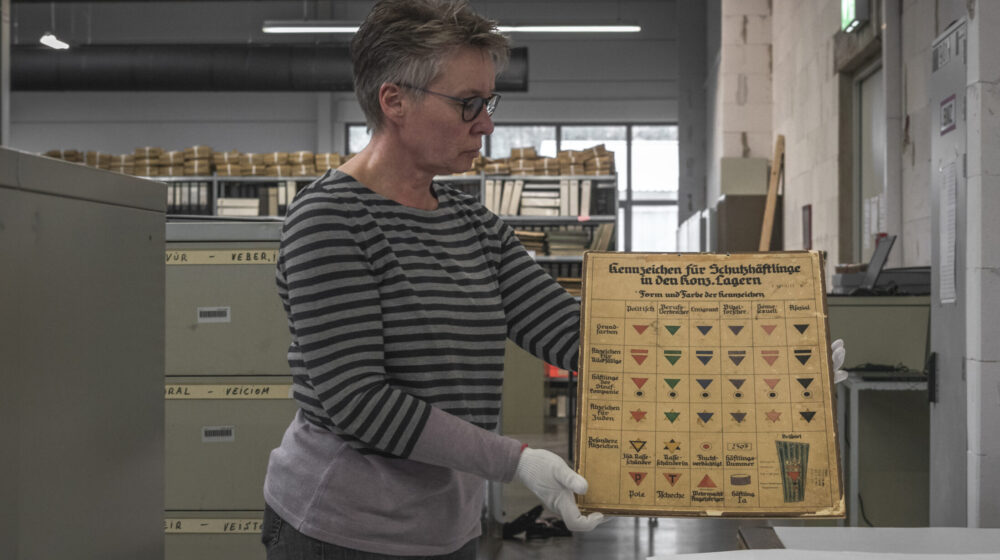
Six columns and five lines – that was all the Nazis needed to divide the people in the concentration camps into sometimes dehumanizing categories. One of the few surviving panels illustrating the cloth ID badges made its way to the collection of the Arolsen Archives from the liberated Dachau concentration camp after the war.
Initially, the SS distinguished the prisoners visually from one another in the different concentration camps, e.g. by types of clothes or haircuts. From the late 1930s onwards, however, the practice of marking them by colored cloth triangles gradually came to prevail throughout the camp system. Plans were that the prisoners ought to be recognizable straightaway by the “reason for their imprisonment”, e.g. as “antisocial elements”. A prisoner could be assigned to a group arbitrarily and with a view to humiliating him individually. And more often than not would the prisoners themselves not characterize themselves as parts of this group.
A display board for the triangles assigned in the concentration camps
Along with his or her inmate number, every concentration camp inmate had to sew a triangle of a certain color onto his/her jacket and trousers. The National Socialists used display boards to indicate which triangle should mark which group of prisoners. After the war, one of these charts made its way from the liberated Dachau concentration camp to the Arolsen Archives and is still kept there today.
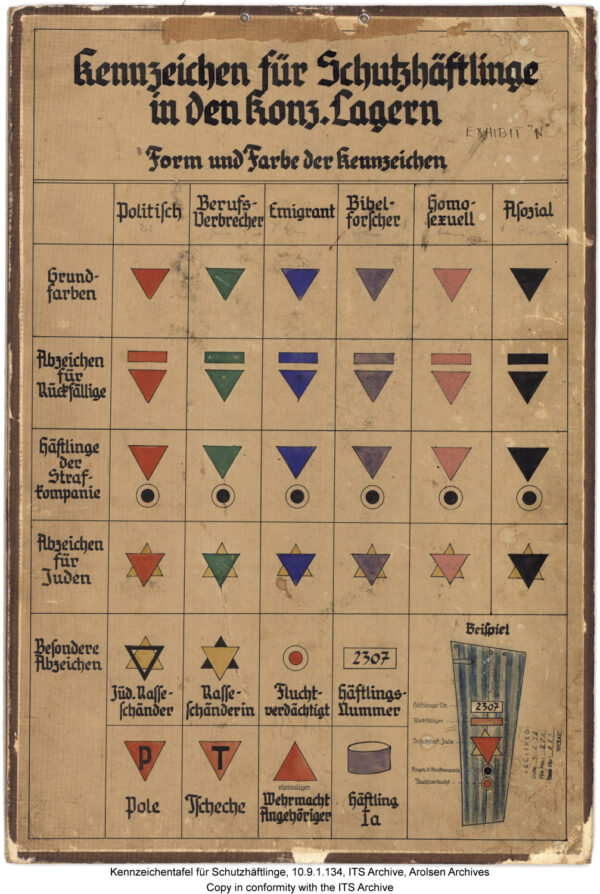
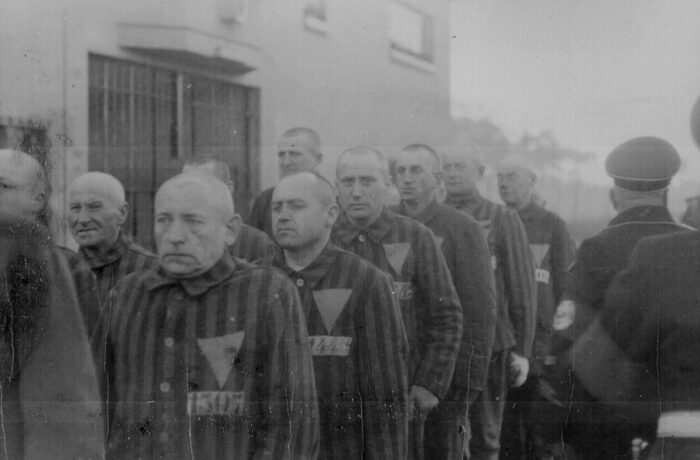
Prisoner groups in the concentration camp
Today, hardly any document appears in books about concentration camps as frequently as this overview.
Red triangle for political prisoners
Social Democrats, Communists, trade unionists, and others considered political opponents by the National Socialists used to wear red triangles. A joke about Hitler or a denunciation often times could suffice for someone to be incarcerated as a “political prisoner”. Green triangles were assigned to so-called career criminals. This prisoner group included many people who had been convicted several times for minor offenses and did not fitinto the vision of the Nazi community.
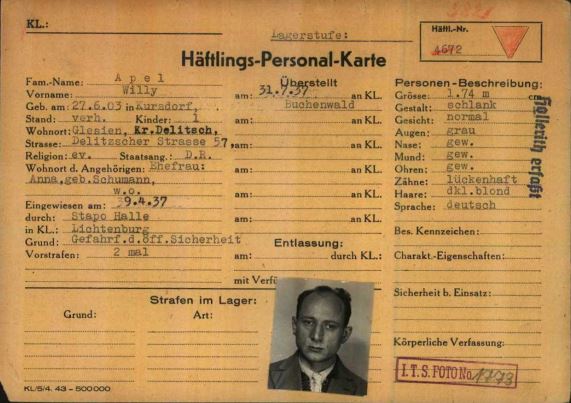
Willi Apels prisoner registration card. (Photo: Arolsen Archives)
Separate triangle for Jehovah’s Witnesses
The blue triangle was for emigrants, i.e. German citizens who initially had left their homeland after the National Socialists came to power in 1933, but had then returned and were therefore suspected of espionage. Jehovah’s Witnesses who were still referred to as “Bibelforscher” (Bible Researchers) in those years were persecuted because, for religious reasons, they refused to join Nazi organizations or serve in the military; they had to wear purple triangles.
Arbitrarily stigmatized as “antisocial elements”
Homosexual prisoners could be recognized by their pink triangles. And finally, black triangles were reserved for all people the National Socialists’ worldview saw as “antisocial elements”, e.g. the homeless, the beggars, or people without stable employment. Later, the brown triangle came to be added and applied to Sinti and Roma. There was no “separate” category for Jewish prisoners, whom the National Socialists defined as “J”. They used to be formally assigned to one of the other groups, e.g. the political prisoners or the “antisocial elements”. To be identifiable as Jews, nevertheless, people had to wear an inverted yellow triangle beneath the colored triangle assigned to them, with the two triangles forming a “Star of David”.
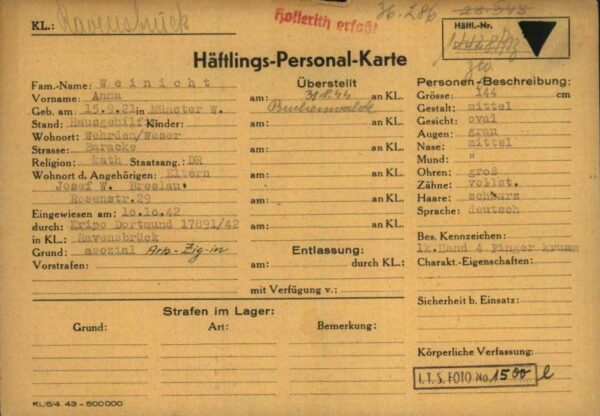
Anna Weinichts prisoner registration card. (Photo: Arolsen Archives)

